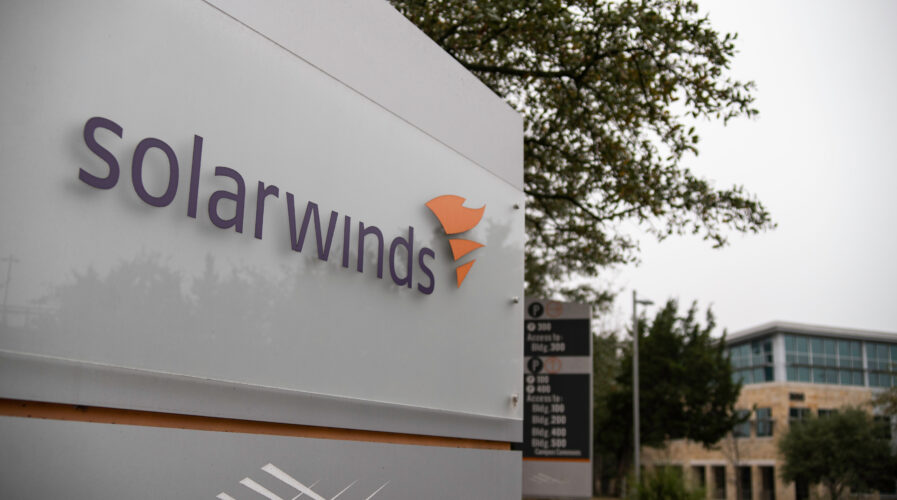
(Source – Shutterstock)
SolarWinds Hybrid Cloud Observability breaks down the silos in the cloud
Cloud adoption continues to gain momentum globally as businesses look to adopt more emerging technologies in their operations. The agility and scalability of the cloud have been the key reasons why its adoption has soared in recent times, with affordable pricing opportunities also a contributing factor.
A recent report from Gartner also showed that worldwide end-user spending on public cloud services is forecast to grow 20.4% in 2022 to total US$ 494.7 billion, up from US$ 410.9 billion in 2021. In 2023, end-user spending is expected to reach nearly $600 billion.
While the public cloud has been the cheaper and preferred option, the hybrid cloud is also becoming a preferred choice by organizations, especially those dealing with sensitive data. And this is where businesses need to ensure they have sufficient visibility tools to both monitor and secure their data.
Moreover, as organizations modernize their operations, applications, and databases and leverage hybrid and multi-cloud deployments, many are still supporting existing, traditional workloads and systems. Organizations managing these complex, diverse, and distributed environments have amassed various monitoring and management tools across different teams.
But having multiple management tools can end up having ITOps, DevOps, and SecOps teams receive an overload of alerts and disjointed analytics as well as have difficulty accessing the actionable insights they need to quickly identify, prioritize, and resolve issues in business-critical services. These disparate tools can also be cumbersome to implement and manage, and they can become cost-prohibitive to maintain and scale, creating operational and business risks.
Cloud complexities have been proven to be a common problem for most organizations today. The rapid acceleration to the cloud may have empowered business continuity and improved productivity. However, complexities can still arise in the long run.
One way to deal with these complexities is to have a unified, integrated management platform. As such, SolarWinds has announced the launch of SolarWinds Hybrid Cloud Observability, built on the SolarWinds Platform. The SolarWinds Platform offers organizations of any size the ability to accelerate their digital transformation efforts by providing a comprehensive and unified view of today’s modern, distributed, and hybrid network environments.
Through an integrated, comprehensive, and cost-effective full-stack solution designed to provide end-to-end oversight of service delivery and component dependencies, the SolarWinds Hybrid Cloud Observability helps organizations shift from reactive to proactive IT posture as they meet the challenges of today’s hybrid IT realities.
With Hybrid Cloud Observability, tech pros gain single-pane-of-glass monitoring with actionable intelligence to expedite problem resolution and enable proactive management. SolarWinds applies built-in intelligence and AIOps to its full-stack solution. The platform is built to help organizations continuously improve performance, availability, security, and digital experience across complex, diverse, and distributed hybrid and cloud environments.
For Rohini Kasturi, chief product officer, SolarWinds, the level of IT complexity organizations face is growing at an unprecedented scale due to tool sprawl, rising costs, security threats, and siloed operations.
“Customers have told us clearly, that they need help to meet today’s challenges and reduce operational noise so their teams can scale to address a broad range of business needs faster, maximize budget outcomes, and drive business results,” said Kasturi.
SolarWinds Hybrid Cloud Observability
According to SolarWinds, the platform can also be integrated into existing cybersecurity solutions deployed by organizations. For example, users can ingest events and logs from various solutions and visualize, report, and alert upon this data.
Apart from that, SolarWinds Hybrid Cloud Observability enables organizations across all sizes and industries to gain rapid time to value, ensure service levels, accelerate issue resolution, and reduce alert fatigue and risk. It’s designed to help organizations do three main things.
First, organizations will be able to accelerate issue resolution with actionable intelligence. The platform’s full-stack and integrated coverage help IT teams make faster and more informed, coordinated, and effective decisions. Users can readily discover, map, and understand dependencies to predict and prevent user experience degradation and service outages.
“The ability to accelerate issue resolution with actionable intelligence is partially automated now and we are working towards enhancing it further as we move forward. For example, SolarWinds Hybrid Cloud Observability can automatically open tickets in an ITSM solution such as our SolarWinds Service Desk or ServiceNow with the relevant details of the issues,” the organization explained.
Next, organizations can ensure service levels to increase IT efficiency and business agility. The platform helps teams meet service levels and more efficiently conduct problem resolution, configuration, reporting, and planning tasks, freeing up time to focus on more impactful activities to advance the business. Armed with correlated intelligence, teams can more efficiently identify, prioritize, and resolve problems and anomalies, reduce compliance and attack surface risks, and accurately determine where best to scale performance and capacity.
Lastly, organizations can benefit from a low cost of ownership. Enterprises gain centralized oversight to optimize on-premises and cloud resource costs with a unified solution built to simplify and improve cloud migration efforts. The suite approach allows organizations to cost-effectively start and extend Hybrid Cloud Observability across hybrid and cloud environments with a unified experience, deployment, scalability, and support.
READ MORE
- Ethical AI: The renewed importance of safeguarding data and customer privacy in Generative AI applications
- How Japan balances AI-driven opportunities with cybersecurity needs
- Deploying SASE: Benchmarking your approach
- Insurance everywhere all at once: the digital transformation of the APAC insurance industry
- Google parent Alphabet eyes HubSpot: A potential acquisition shaping the future of CRM


